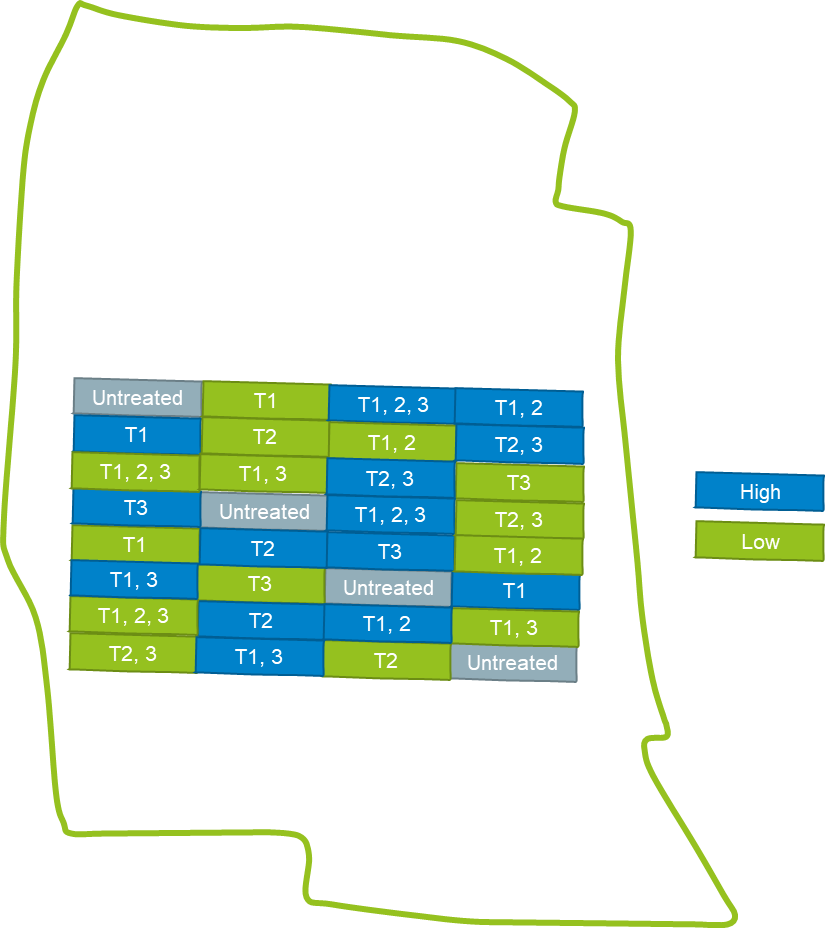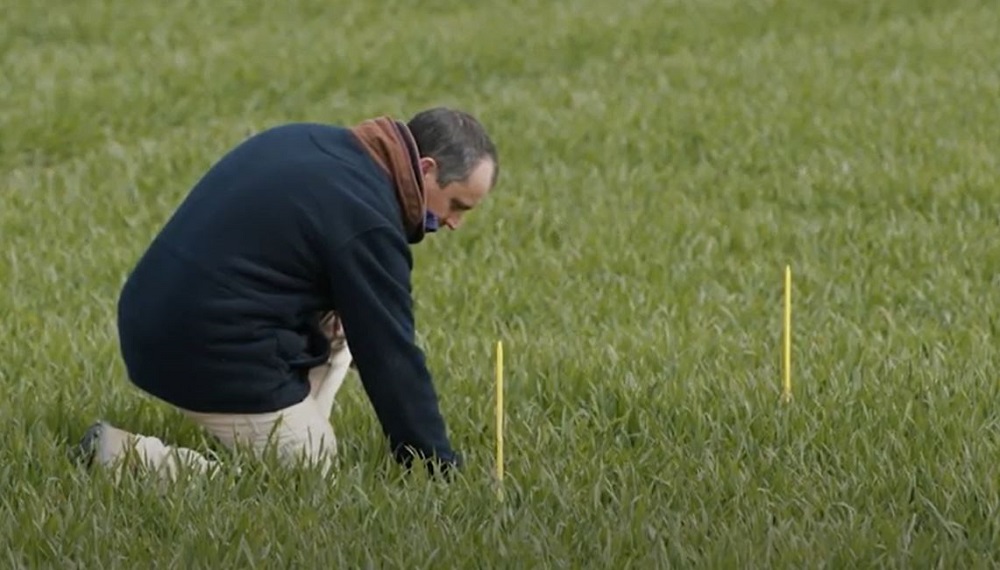Strategic Cereal Farm tests low-input fungicide programmes
Wednesday, 15 December 2021
AHDB’s Alex Wade discusses how a managed approach to lowering inputs proved to be cost effective in the winter wheat trials at Strategic Cereal Farm East.
Find out more about the managed lower-inputs trial
Disease management starts with variety choice. A variety with a high untreated yield (see the AHDB Recommended Lists), with the other key principles of integrated pest management (IPM) applied, helps to ensure a strong foundation.
Once the crop is in the ground, attention shifts to assisting the crop's genetics. For many, this includes the use of fungicides.
The managed input trial compared a high-input with a low-input fungicide regime (variety: Gleam).
Inputs were applied independently at T1, T2 and T3 and also in combination.

In 2021, a dry and cold spring resulted in little disease pressure in the replicated field scale trial – with septoria tritici (the most common disease) and yellow rust coming into the crop relatively late.
Assessments showed that fungicides were effective at managing the disease and they did protect crop yield. However, it was a year of low yield responses. This came at a cost for the high-input regime. In these trials, lower levels of input were sufficient and generally more cost-effective.
Key points from the trial (harvest 2021)
- Managing inputs requires a tailored approach for product choice and rate, but shouldn’t involve dropping applications in a sequence – as this provides a gap for disease to exploit
- A lower T1 was appropriate, but using stronger chemistry at T3 was necessary
- The most expensive programme supported the highest yielding crop, however this was not the most profitable approach
- Low-input levels were generally associated with a better gross margin
- However, this trial had low levels of disease and results may not be reflected in future seasons
- Fungicide inputs can and should be tailored to evolving disease pressure, within the programmed approach, rather than a one-size-fits-all method
Wheat fungicide margin challenge 2021
For a different perspective on disease management in 2021, it is interesting to look at the results from the ADAS/AHDB wheat fungicide margin challenge 2021.
The contestants attempted to go as low as possible to maximise their margins.
In this competition, on balance, moderate-to-high spend programmes achieved the highest margin over fungicide cost – reflecting the relatively high (albeit late) disease pressure in 2021.
See the results from the wheat fungicide margin competition
This blog is part of a series produced following Strategic Cereal Farm Week (winter 2021/22). Our Strategic Cereal Farms put cutting-edge research and innovation into practice on commercial farms around the UK. The week of online events featured the latest results, delivered by our farm hosts, industry experts and researchers.
Topics:
Sectors:
Tags:



